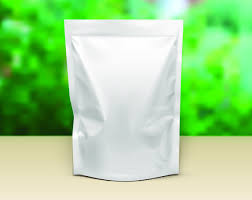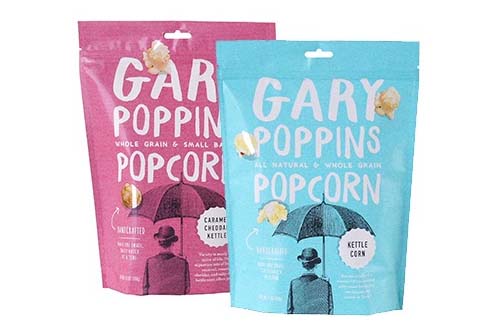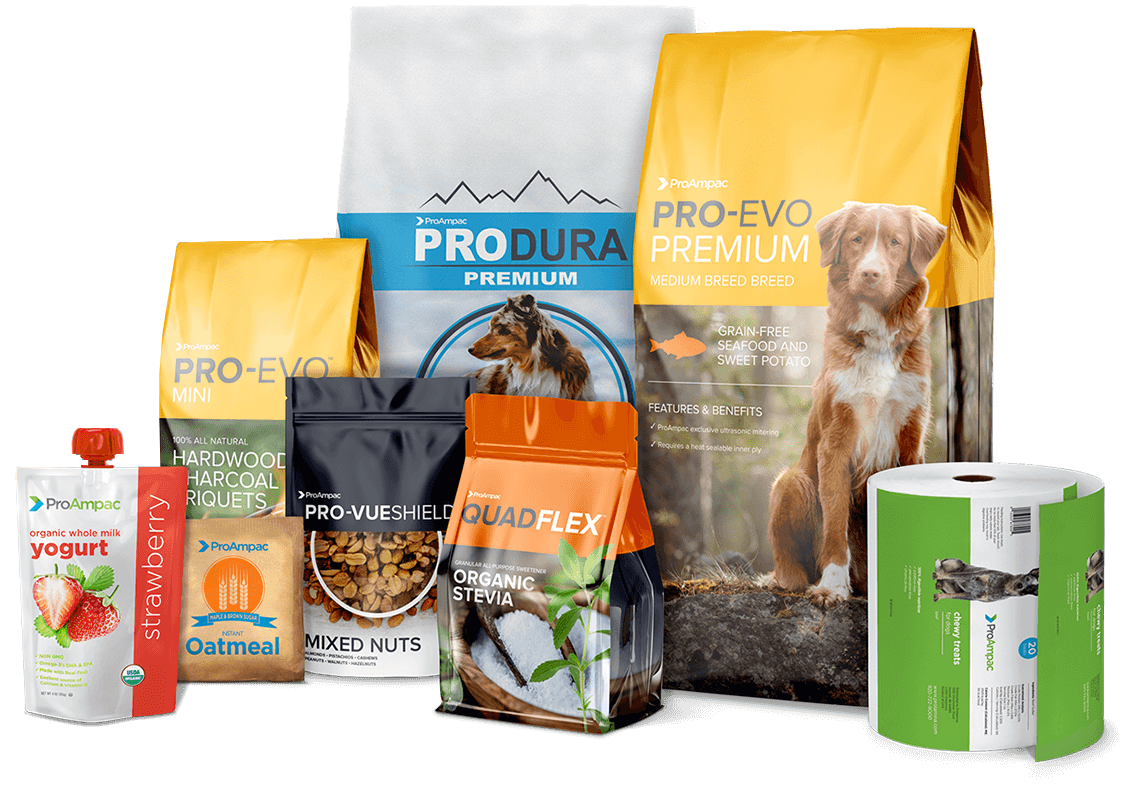Choosing the right packaging for your product can feel like a big puzzle. Do you go with something hard and strong, or soft and bendy? This article will help you understand the difference between flexible packaging and rigid packaging so you can pick what’s best for your product. We’ll break down the pros and cons of each, look at what consumers prefer, and guide you to make the smartest choice. Keep reading to become a packaging expert!
1. What are Rigid and Flexible Packaging? Understanding the Basics of Packaging Types
When you walk down any aisle in a store, you’re surrounded by packaging. From the box your cereal comes in to the bag of chips, packaging is used to protect and sell almost everything we buy. But have you ever stopped to think about the type of packaging? Basically, packaging comes in two main forms: rigid packaging and flexible packaging.
Rigid packaging is defined as “unable to bend or be forced out of shape.” Think of a glass bottle of juice, a can of soup, or a sturdy cardboard box. These are all examples of rigid packaging. They are strong and keep their shape, offering a high level of protection for the product inside.
On the other hand, flexible packaging is defined as “capable of bending easily without breaking.” Think of a pouch of coffee, a plastic bag of snacks, or even an inverted squeeze pouch of yogurt. Flexible packaging is literally flexible – it can bend or be forced into different shapes and takes up less space than rigid options.
Understanding these two forms of packaging is the first step in choosing the best for your product. Let’s dive deeper into each packaging option to see what makes them unique.
2. What is Rigid Packaging? Exploring the World of Sturdy Packaging Options
Rigid packaging is all about strength and structure. It’s the kind of packaging that stands tall and proud on the shelf. Examples of rigid packaging include:
- Cardboard boxes: Like the ones used for shipping or cereal.
- Glass bottles and jars: For drinks, sauces, and beauty products.
- Metal cans: For canned goods and beverages.
- Plastic containers: Like laundry detergent bottles or tubs of ice cream.
- Corrugate boxes: Stronger cardboard used for heavier items.
Rigid materials are often made from materials like paperboard, plastic, glass, or metal. This type of packaging is often used for products that require a high level of protection, or need to stack well on shelves. Rigid packaging may be more expensive to produce and ship because of its weight and bulk, but it offers excellent protection for the product.
For example, imagine fragile glass bottles. Rigid packaging like cardboard boxes with inserts are essential to keep them safe during shipping. Or think about cans of soup – the metal can is crucial to preserve the food products and prevent spoilage.

Examples of Rigid Packaging
3. What is Flexible Packaging? Discovering the Versatility of Bendable Packaging
Flexible packaging, in contrast, is all about adaptability and efficiency. It’s the packaging that can mold to the shape of your product and often uses less space than rigid packaging. Examples of flexible packaging include:
- Pouches: Like stand-up pouches for snacks, cosmetics packaging back-sealed pouch bags, or nozzle pouch bags.
- Bags: Including plastic bags for groceries, gusseted pouch bag for coffee, or film wrapping hand-hole pouch bag for promotional items.
- Wraps: Like film packaging flexible pouch for food or industrial goods.
- Sachets: Small pouches for single-serve products.
- China Plastik Packaging Envelope Pouch: Versatile and lightweight for various products.
- Soft Touch Pack Flat Pouch: Smooth and appealing for consumer goods.
- Flat Bottom Pouch: Stable and shelf-friendly for retail.
- All Natural Packaging Gusseted Pouch Bag: Eco-conscious and expandable for bulkier items.
- Green Beauty Packaging Insert Pouch Bags: Ideal for beauty and personal care products.
- Popular Flexible Packaging Irregular Shape Pouch: Unique and eye-catching for branding.
- Popular China Eco Friendly Packaging Nozzle Pouch Bags: Convenient and sustainable for liquids.
- Plastic For Packaging Three-Side Seal Pouch: Cost-effective and versatile for various applications.
Flexible packaging is typically made from flexible material packaging like plastic films, foil, or paperboard laminates. This type of packaging is best for flexible designs and requires less energy and materials to produce compared to rigid options. Flexible packaging takes up less space during shipping and in storage, and often results in less waste after use.
For instance, think about snacks like chips. Flexible packaging, like pouches, keeps them fresh, is easy to carry, and requires less space on store shelves and in your pantry. Or consider cosmetics. Many beauty products now come in flexible pouches, like cosmetic packaging flexible pouch, which are lightweight, easy to use, and reduce plastic waste compared to traditional jars.

Examples of Flexible Packaging
4. What are the Key Differences Between Rigid and Flexible Packaging? Rigid vs Flexible – Spotting the Differences
The key differences between rigid and flexible packaging boil down to a few main points:
| Feature | Rigid Packaging | Flexible Packaging |
|---|---|---|
| Material | Sturdy materials like glass, metal, hard plastic, corrugate | Flexible material packaging like plastic films, foil, laminates |
| Shape | Keeps a fixed shape, not easily bent or altered | Can be easily bent, folded, or shaped |
| Protection | Excellent protection for the product, high impact resistance | Good protection for the product, but less impact resistance than rigid |
| Space Efficiency | Takes up more space in shipping and storage | Flexible packaging takes up less space, more efficient to transport and store |
| Cost | Often higher production and shipping costs | Often lower production and shipping costs |
| Sustainability | Can be recyclable (glass, metal, some plastics), but heavier | Recyclable options increasing, uses less material, lighter weight reduces transport emissions |
| Examples | Glass bottles, cans of soup, cardboard boxes, laundry detergent bottles | Pouches, bags, wraps, including juice pouches, inverted squeeze pouch, flexible packaging for body care products plastic pouch bag |
In short, rigid packaging is strong and sturdy, offering maximum protection but can be bulky and more expensive. Flexible packaging is adaptable and efficient, saving space and cost, with increasing options for sustainability. The packaging is best really depends on what you’re packing and your specific packaging needs.
5. What are the Advantages of Flexible Packaging? Why “Team Flexible” Might Be Right for You
There are many advantages of flexible packaging that make it a popular choice in the packaging market:
- Cost-Effective: Flexible packaging typically uses less material and requires less energy to produce and transport, making it a more cheap option compared to rigid packaging. This can be a significant advantage for businesses looking to reduce costs, especially for bulk production.
- Space-Saving: Flexible packaging takes up less space during shipping, storage, and on retail shelves. This efficiency can lead to lower transportation costs and better shelf utilization. Flexible packaging takes up less space in landfills as well, reducing environmental impact.
- Lightweight: Being lighter than rigid packaging, flexible packaging further reduces transportation costs and fuel consumption, contributing to making fewer runs, thus reducing waste and a smaller carbon footprint.
- Versatile Designs: Flexible packaging can be easily customized into various shapes and sizes, including juice pouches, stand-up pouches, nozzle pouch bags, and irregular shape pouches. This versatility allows for unique branding and consumer appeal, perfect for cosmetics brands and promotional product distributors.
- Improved Shelf Life: Modern flexible packaging materials offer excellent barrier properties against moisture, oxygen, and light, improved shelf life for various food products, cosmetics, and even nutritional supplements. This is crucial for maintaining product freshness and quality, especially for food manufacturers.
- Consumer Convenience: Flexible packaging is often easier for consumers prefer because they are lightweight, easy to open and close (with features like zippers and spouts), and convenient to carry and store. Think about the ease of using a flexible pouch versus a heavy glass bottle.
- Sustainable Options: The flexible packaging association and manufacturers are continuously innovating, leading to enhancements in sustainability. There are now more recyclable, compostable, and bio-based flexible packaging options available, aligning with the growing demand for eco-friendly packaging. For businesses focused on green beauty packaging or all natural packaging, flexible options offer compelling sustainable alternatives.
These advantages highlight why “team flexible” is gaining momentum across various industries. From food products to cosmetics and beyond, flexible packaging offers a compelling combination of cost savings, efficiency, and sustainability.
6. What are the Disadvantages of Flexible Packaging? Considering the Downsides of Flexible Options
While flexible packaging offers numerous benefits, it’s important to consider the disadvantages of flexible packaging as well:
- Less Impact Resistance: Compared to rigid packaging, flexible packaging provides less protection against crushing or impacts. While it protects well against punctures and tears, very heavy items stacked on top could potentially damage flexible packaging. Rigid packaging will always offer superior structural integrity.
- May Not Stand Alone: Some flexible packaging formats, like flat pouches, may not stand upright on shelves without support. While stand-up pouches address this, certain products might still benefit from the self-standing nature of rigid packaging.
- Perception of Lower Quality (Sometimes): In some consumer segments, flexible packaging might be perceived as lower quality compared to the sturdiness of rigid packaging. However, this perception is changing as flexible packaging becomes more sophisticated and widely used for premium products, including cosmetics and beauty supply packaging.
- Printing Challenges (Historically): While printing technology has advanced significantly, achieving the same level of crispness and detail on flexible packaging as on smooth rigid packaging surfaces was historically more challenging. However, with modern rotogravure and flexographic printing, high print quality is readily achievable on flexible packaging, allowing for accurate and vibrant brand messaging, crucial for cosmetics packaging and other consumer-facing products. HADL Packaging, for example, uses advanced printing techniques to ensure excellent print quality.
- Barrier Properties (For Some Materials): While high-barrier flexible packaging films are available, some basic flexible packaging materials might not offer the same level of barrier protection as certain rigid packaging materials like glass or metal, especially for very sensitive products that require a high level of barrier. However, for most applications, and with advancements in flexible packaging materials, this is rarely a limiting factor.
Despite these potential drawbacks, ongoing innovation in flexible packaging materials and designs is constantly addressing these limitations. For many products, the advantages of flexible packaging far outweigh the disadvantages, making it a highly competitive packaging option.
7. What are the Advantages of Rigid Packaging? Highlighting the Strengths of Sturdy Packaging
Rigid packaging also has its own set of compelling advantages of rigid packaging:
- Superior Protection: Rigid packaging offers excellent protection for the product, especially against impacts, crushing, and stacking forces. This is crucial for fragile items like glass bottles or products that need to withstand rough handling during shipping.
- Stackability and Stability: The sturdy nature of rigid packaging makes it easy to stack and display on shelves. Rigid packaging is often used for products that need to maintain their shape and presence on retail displays.
- Premium Perception: Rigid packaging often conveys a sense of higher quality and premium value to consumers prefer. For luxury goods or products aiming for a high-end image, rigid packaging can enhance perceived value.
- Reclosability and Dispensing Options: Many rigid packaging formats, like jars and bottles, offer excellent reclosability and convenient dispensing options. Rigid packaging is often favored for products that are used multiple times, like creams or lotions in jars.
- Recyclability (Established Infrastructure): Rigid packaging materials like glass, metal, and cardboard have well-established recycling infrastructures in many regions. Rigid packaging made from these materials can be readily recyclable, contributing to sustainability goals.
For products that demand maximum protection, need to project a premium image, or benefit from established recycling streams, rigid packaging remains a strong contender.

Rigid Packaging Offers Superior Protection
8. What are the Disadvantages of Rigid Packaging? Examining the Limitations of Rigid Choices
Just as with flexible packaging, there are disadvantages of rigid packaging to consider:
- Higher Cost: Rigid packaging generally rigid packaging: 7-21 times more expensive to manufacture and transport compared to flexible packaging: 9-24 times. The heavier weight and bulkier nature of rigid packaging contribute to higher shipping costs.
- Bulk and Space Inefficiency: Rigid packaging packaging takes up less space than flexible packaging in storage and shipping. Empty rigid packaging also takes up significant space before filling. This can lead to higher warehousing costs and less efficient logistics.
- Heavier Weight: The heavier weight of rigid packaging increases transportation costs and fuel consumption. This also contributes to a larger carbon footprint compared to lighter flexible packaging.
- Less Design Flexibility: Rigid packaging flexible and rigid formats offer less design flexibility compared to flexible packaging. Creating unique shapes and customized designs can be more complex and costly with rigid packaging.
- Potential for Breakage (Glass): Glass may break if dropped or mishandled, leading to product loss and potential safety hazards. While other rigid packaging materials are less prone to breakage, glass remains vulnerable.
- Environmental Concerns (Plastic, Some Metals): While rigid packaging can be recyclable, the production of some rigid packaging materials, especially certain plastics and metals, can be energy-intensive and have environmental impacts. Although recycling helps, reducing material usage at the source is increasingly prioritized.
These drawbacks underscore that while rigid packaging excels in protection and premium appeal, it can be less cost-effective, space-efficient, and potentially less sustainable compared to flexible packaging.
9. Do Consumers Prefer Flexible or Rigid Packaging? Understanding Consumer Preference in Packaging
Consumer preference in packaging is not always straightforward and really depends on what you’re considering. However, some general trends are emerging:
- Convenience Matters: Consumers prefer convenient packaging. Flexible packaging, with its lightweight nature, easy-open features (like zippers on pouches), and portability, often scores high on convenience. Think about including juice pouches for kids – they are lightweight and easy to handle.
- Sustainability is Growing: Increasingly, consumers prefer packaging that is perceived as sustainable. Flexible packaging, especially eco-friendly packaging options made from recyclable or compostable materials, is gaining favor as a more environmentally conscious choice. 100% Green Package Cosmetics Flexible Pouch Bag For Free and 10S Recyclable Takeaway Packaging Flexible Green Packaging are examples of this trend.
- Quality Perceptions Evolving: While rigid packaging traditionally signaled higher quality, consumer preference is shifting. High-quality printing, innovative designs, and premium features in flexible packaging are changing perceptions. For cosmetics packaging, for example, sophisticated flexible pouches are now widely accepted and even preferred for their sleekness and reduced waste.
- Product-Specific Preferences: Consumer preference often depends on the type of product. For premium spirits, glass bottles (rigid packaging) might still be preferred for their traditional appeal. For everyday snacks, flexible pouches are widely accepted. For lawn and garden products or pet food companies, durable yet manageable flexible packaging like gusseted pouch bag or flat bottom pouch could be ideal.
Overall, while rigid packaging still holds appeal in certain sectors, flexible packaging is increasingly meeting and exceeding consumer preference due to its convenience, sustainability advantages, and evolving quality perceptions.
10. Which Packaging Should You Choose for Your Product? Choosing the Best Packaging Option for Your Needs
Choosing between flexible or rigid packaging isn’t about one being definitively “better.” It’s about choosing the packaging should you choose that is best for your product and your business goals. Here’s a quick guide to help you decide:
Choose Flexible Packaging If:
- Cost is a major concern: You need to minimize packaging costs and shipping expenses.
- Space efficiency is critical: You want to save space in shipping, storage, and on shelves.
- Lightweight packaging is desired: You want to reduce weight for easier handling and lower transportation costs.
- Sustainability is a priority: You are looking for recyclable, compostable, or reduced-material packaging options.
- Consumer convenience is key: You want packaging that is easy to open, carry, and store for consumers.
- Your product is suitable for flexible packaging formats like pouches, bags, or wraps (e.g., snacks, cosmetics, liquids, powders, even nutritional supplements).
Choose Rigid Packaging If:
- Maximum product protection is essential: Your product is fragile and needs high impact resistance.
- Stackability and display are crucial: Your product needs to stand tall and stack well on shelves.
- Premium image is desired: You want to convey a high-end or luxury feel.
- Reclosability and dispensing are important: Your product is used multiple times and needs secure reclosing.
- Established recycling streams are favored: You want to utilize well-established recycling infrastructures for materials like glass, metal, or cardboard.
- Your product is traditionally packaged in rigid formats and consumer preference strongly leans that way (e.g., premium beverages in glass bottles, canned goods in metal cans).
Ultimately, the packaging option depends on a lot to consider, including your type of product, budget, sustainability goals, and target market. Contact us today to learn more about how HADL Packaging can help you choose the best flexible packaging solutions for your specific packaging needs. We offer a wide range of flexible packaging options, from cosmetics packaging back-sealed pouch bags to eco-friendly packaging nozzle pouch bags, and can provide custom printing and design to make your product stand out.
Key Takeaways:
- Flexible packaging and rigid packaging are the two main types of packaging, each with unique characteristics.
- Flexible packaging is cost-effective, space-saving, versatile, and increasingly sustainable.
- Rigid packaging offers superior protection, stackability, and a premium image.
- Consumer preference is evolving, with convenience and sustainability driving demand for flexible packaging.
- The packaging is best choice really depends on what you’re product, business goals, and target market.
By understanding the differences between rigid and flexible packaging, you can make an informed decision and choose the best packaging format to protect your product, appeal to consumers prefer, and achieve your business objectives.
Post time: 02-13-2025

